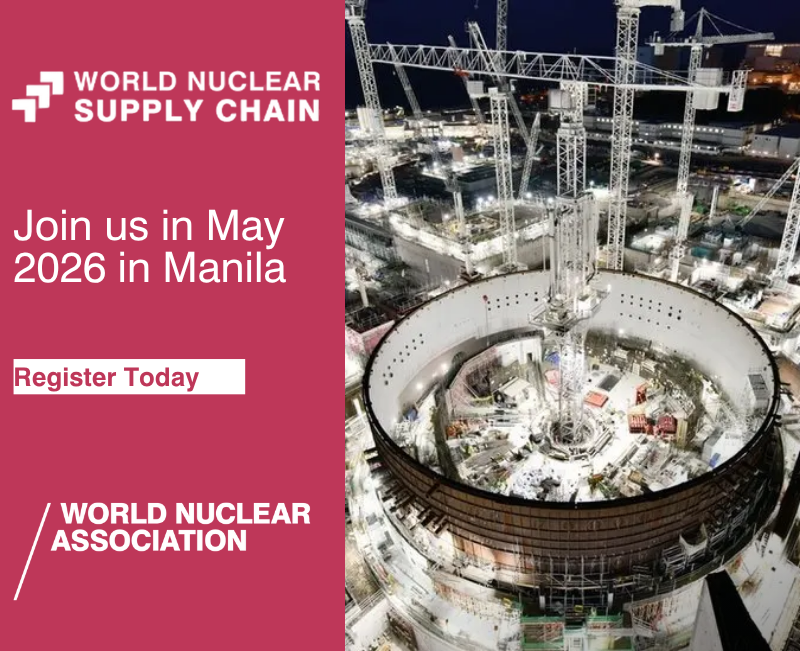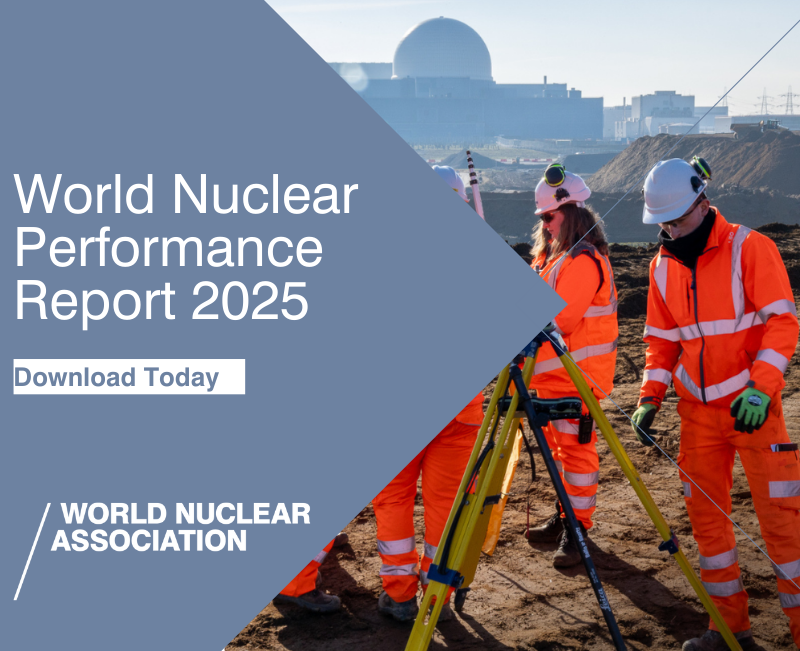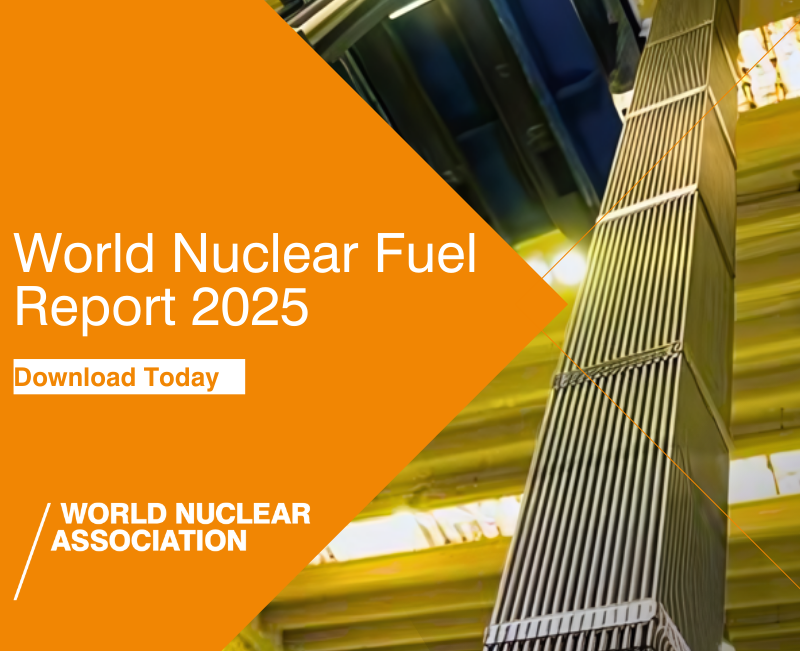How would you define a closed fuel cycle?
A closed fuel cycle refers to a system in which fuel discharged from a nuclear reactor is reprocessed, and the recovered nuclear materials are reused to create new fuel. In modern light-water reactors, the fuel is not burned out completely. In fact, up to 97% of its weight is unburned uranium and plutonium. Both of these elements can be reused to make new fuel. So, a closed fuel cycle is, in many ways, the only practical solution when we consider the efficient use of natural resources and the minimisation of waste. However, due to the characteristics of light-water reactors' neutron spectra, conventional light-water reactors can only support a single plutonium recycle and two or three uranium recycles.
What can be done to address this?
A promising solution is "partitioning and transmutation". This is a technical process which involves the separation of used nuclear fuel into different components, allowing for the optimal use of each. The process considers specific technologies that can improve the current practices of waste management.
How does this differ from the current used nuclear fuel reprocessing methods?
In France, and in other countries that employ similar methods, only uranium and plutonium are recovered from used nuclear fuel during reprocessing. The remaining materials are treated as waste. The recovered uranium and plutonium are then reused as fuel in light-water reactors, while the rest is vitrified and sent for final disposal. With this method, uranium can be reused only two or three times, as the accumulation of 'even isotopes' significantly reduces fuel efficiency. Plutonium is typically used only once due to similar constraints.
And how does partitioning and transmutation improve on this?
In the case of partitioning and transmutation, when the uranium and plutonium are separated, a critical fraction, known as "minor actinides", is also extracted. These are the most long-lived and hazardous components of spent nuclear fuel. The minor actinides are then sent for transmutation, a process that involves bombarding them with accelerated particles (either in a fast neutron reactor or a proton accelerator) to convert them into less hazardous elements. Fast-breeder reactors are particularly promising here because they can operate using fuel made from plutonium extracted from used nuclear fuel, allowing for multiple recycles. As a result, the volume and long-term hazard of the waste destined for final disposal is significantly reduced, while plutonium is consumed much more efficiently.
Transmutation requires fast reactors?
Yes, fast reactors and advanced radiochemistry are key to this process. Alongside this, we also need the appropriate infrastructure, such as transport containers, radiochemical plants, fuel fabrication plants, and so on. And, of course, an integrator, who would be able to operate everything in a coherent cycle.
And who can deliver such an infrastructure?
There are several possibilities. As a representative of TENEX, I can confidently say that Russian companies, under the Rosatom umbrella, are already developing such systems. Most of the infrastructure, including fast reactors, radiochemical plants, and fabrication facilities, is located in Russia. If the fuel cycle management is outsourced to us it is making it easier for international customers to operate their light-water reactors without needing to develop these facilities themselves in their countries.
TENEX is known as a supplier of enriched uranium - why expand into the used nuclear fuel management segment?
This is a market-driven solution. Natural uranium supplies are finite and a valuable resource, and the price can be quite volatile. Given that 96% of spent nuclear fuel is uranium and about 1% is plutonium, we already have the technology to extract and use both. Also, we have the expertise to efficiently manage radioactive waste. This positions us to offer a new approach to the nuclear fuel cycle, or rather, a new type of nuclear fuel cycle offering. Essentially, we’re talking about a complete system that includes fast reactors, containers, radiochemistry, and fuel fabrication from regenerated nuclear materials.
Can this be compared with nuclear fuel 'leasing'?
Legally, it would not be classified as leasing. But in essence, it functions similarly. We would supply fresh fuel to the reactor, collect spent nuclear fuel for reprocessing, and then may return fresh fuel made from regenerated materials.
What technical challenges remain?
Of course, there are still challenges, but they are related to improving existing technologies and scaling the infrastructure.
What are the next steps for advancing this system?
We are committed to tuning our fuel cycle optimisation solution to an off-the-shelf, yet fully completed offering. This means developing a set of standards for not just fresh fuel and used fuel, but also for the radioactive waste produced from reprocessing spent fuel and the transmutation of minor actinides. We have already developed reliable packaging and reference samples for this waste, and we have conceptualised facilities for its final isolation. However, since the disposal of radioactive waste is the responsibility of national operators, a significant amount of work remains to integrate these technical solutions into national laws and regulations. This is critical work, because if successful, nuclear energy clearly demonstrates a fully comprehensive and sustainable solution for every stage of the nuclear fuel cycle, from mining and enrichment to recycling and final waste disposal.
How many countries are considering adopting your solutions?
I would say our global reach is substantial. It may be too soon to claim global adoption, but interest in our solutions continues to grow, and so does the number of potential customers of what we call the "Sustainable Nuclear Fuel Cycle", which is a name suggested by our customers.
In terms of innovation would you say it enhances the sustainability of nuclear energy?
Absolutely. A prime example may be the fast neutron reactors mentioned above. These are, essentially, Generation IV reactors, the most advanced reactors currently available. The same applies to our radiochemical processes, fabrication techniques, and containers. We use the best available technology at every stage.
Finally, what is your estimate for the future of the closed fuel cycle in the next 50 to 100 years?
In the very long term, there is no alternative to a closed fuel cycle. Without it, we’ll eventually run out of natural resources, and the waste burden will become unsustainable. Unfortunately, the processes in the fuel cycle take decades to unfold, so it’s unlikely that the closed fuel cycle will be fully adopted globally within 50 years. But in 100 years, I am confident it will be implemented universally.

_96167_68292.jpg)



_23621.jpg)

_63865.jpg)
_18570.jpg)



